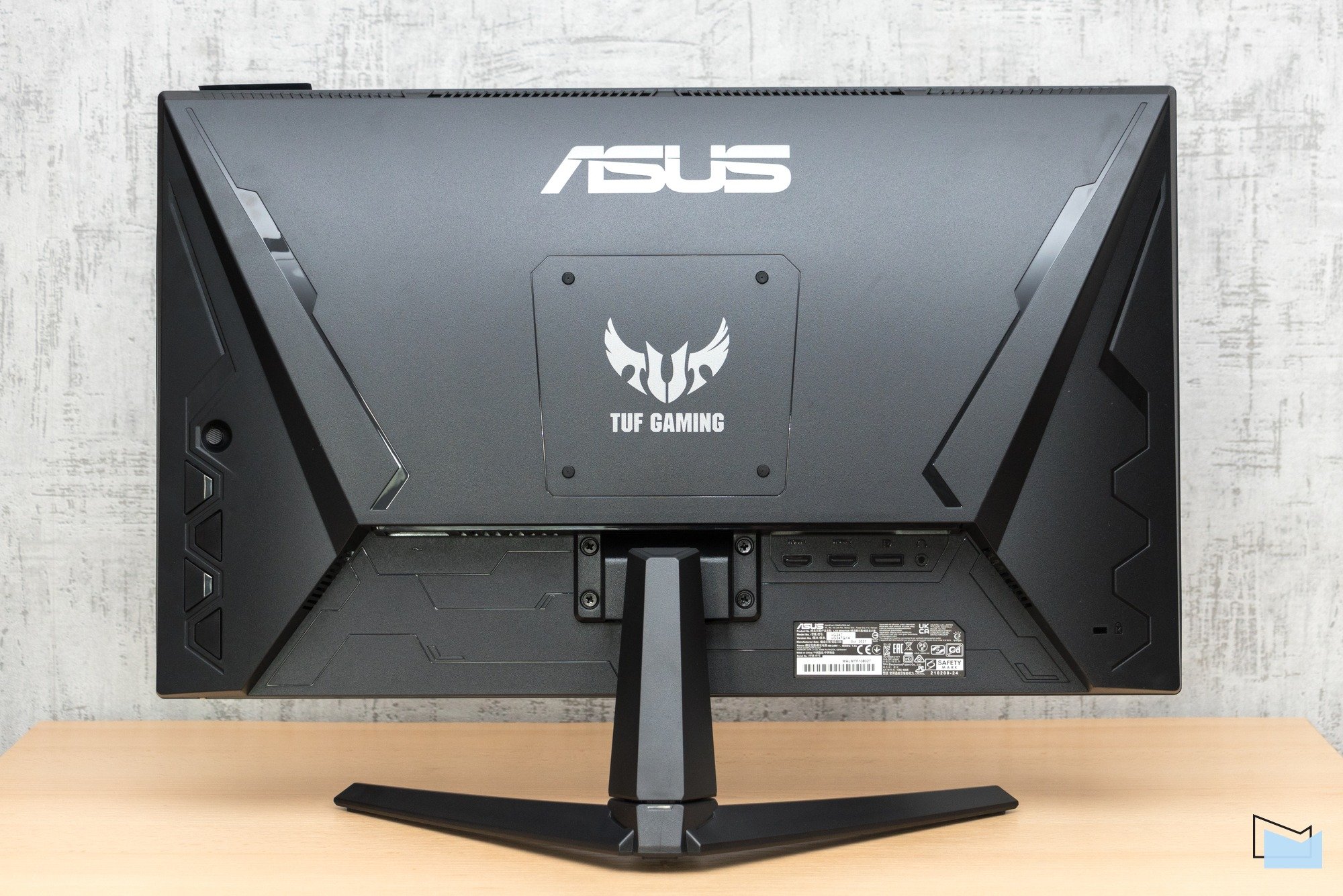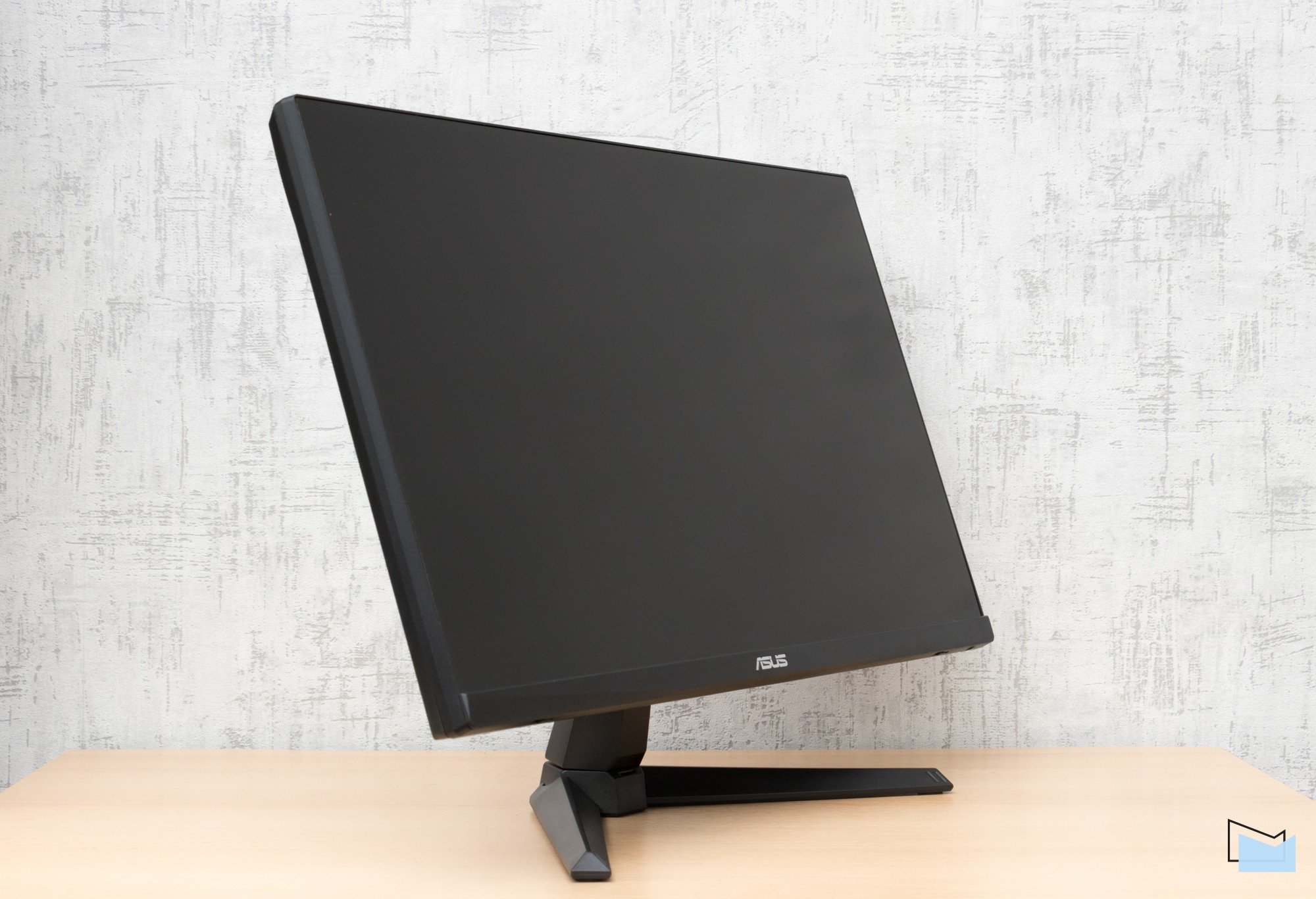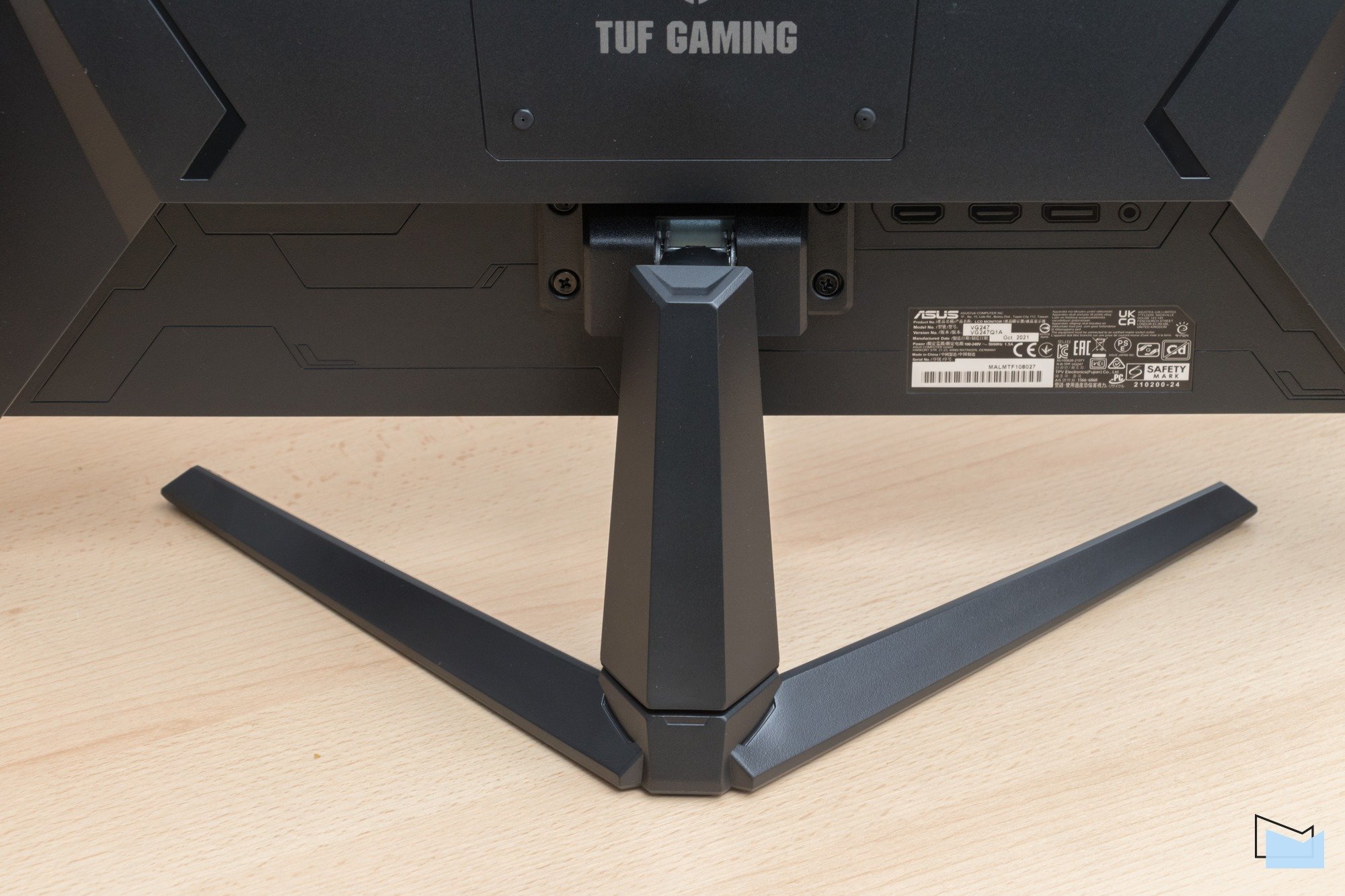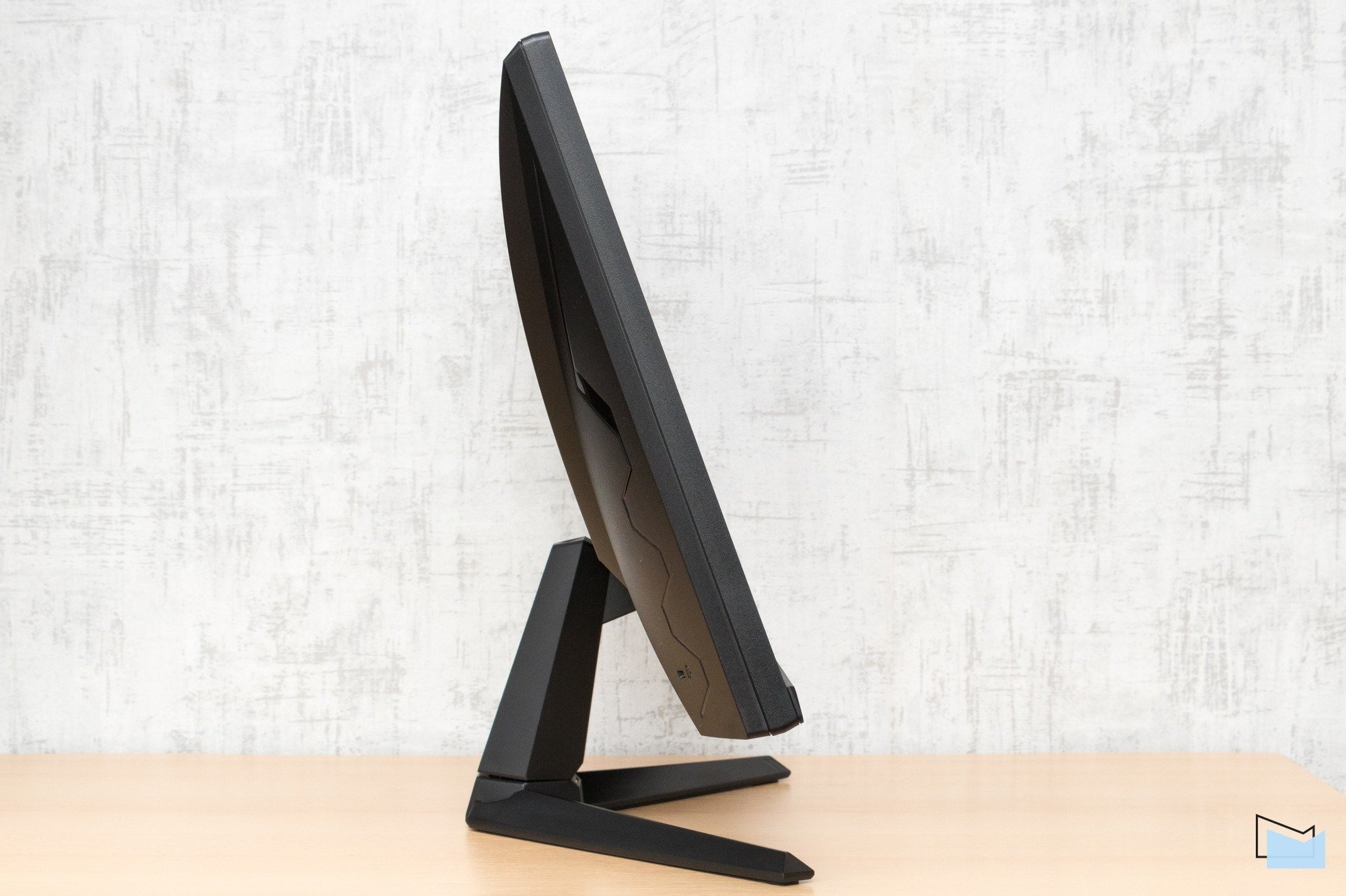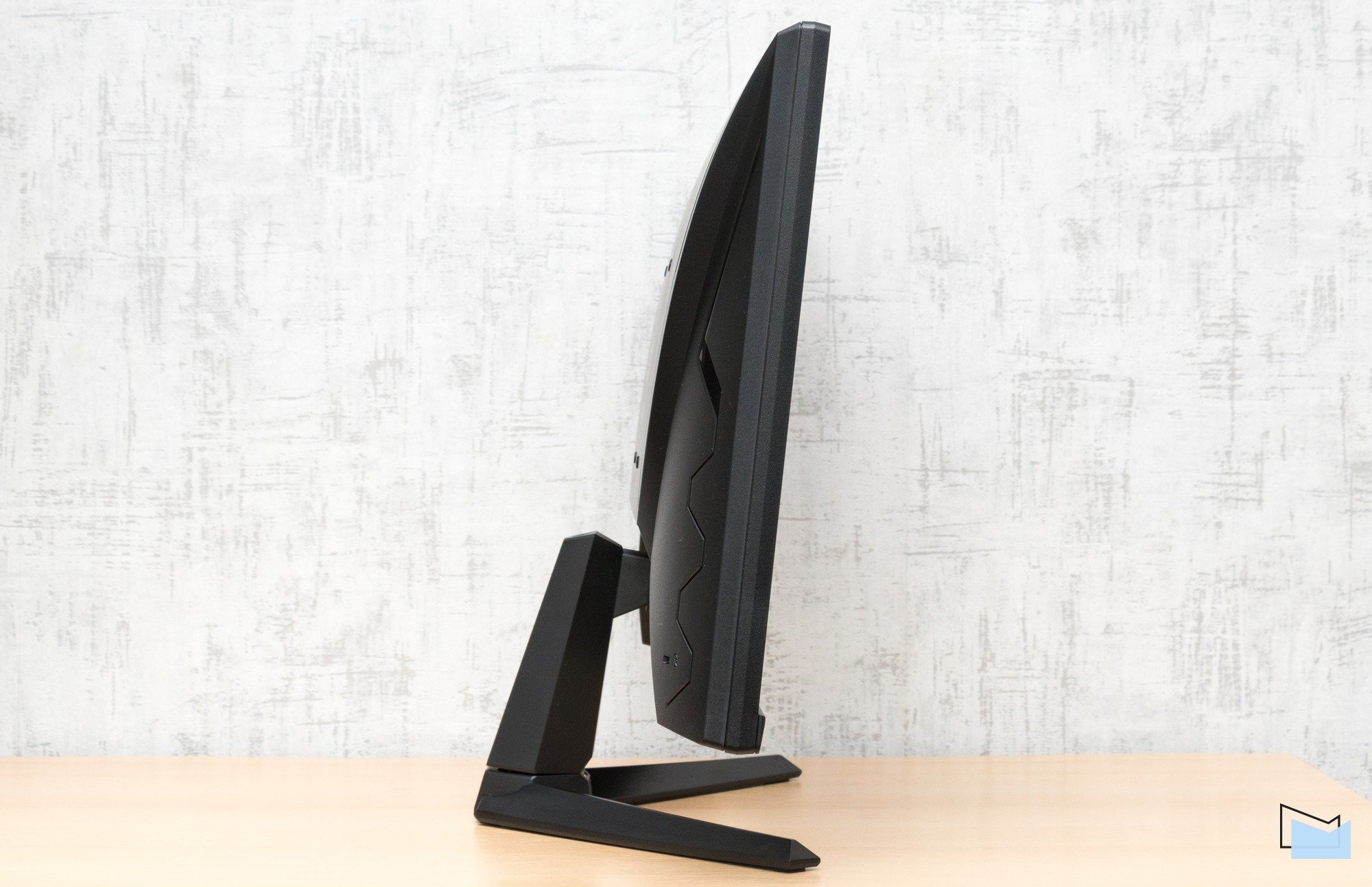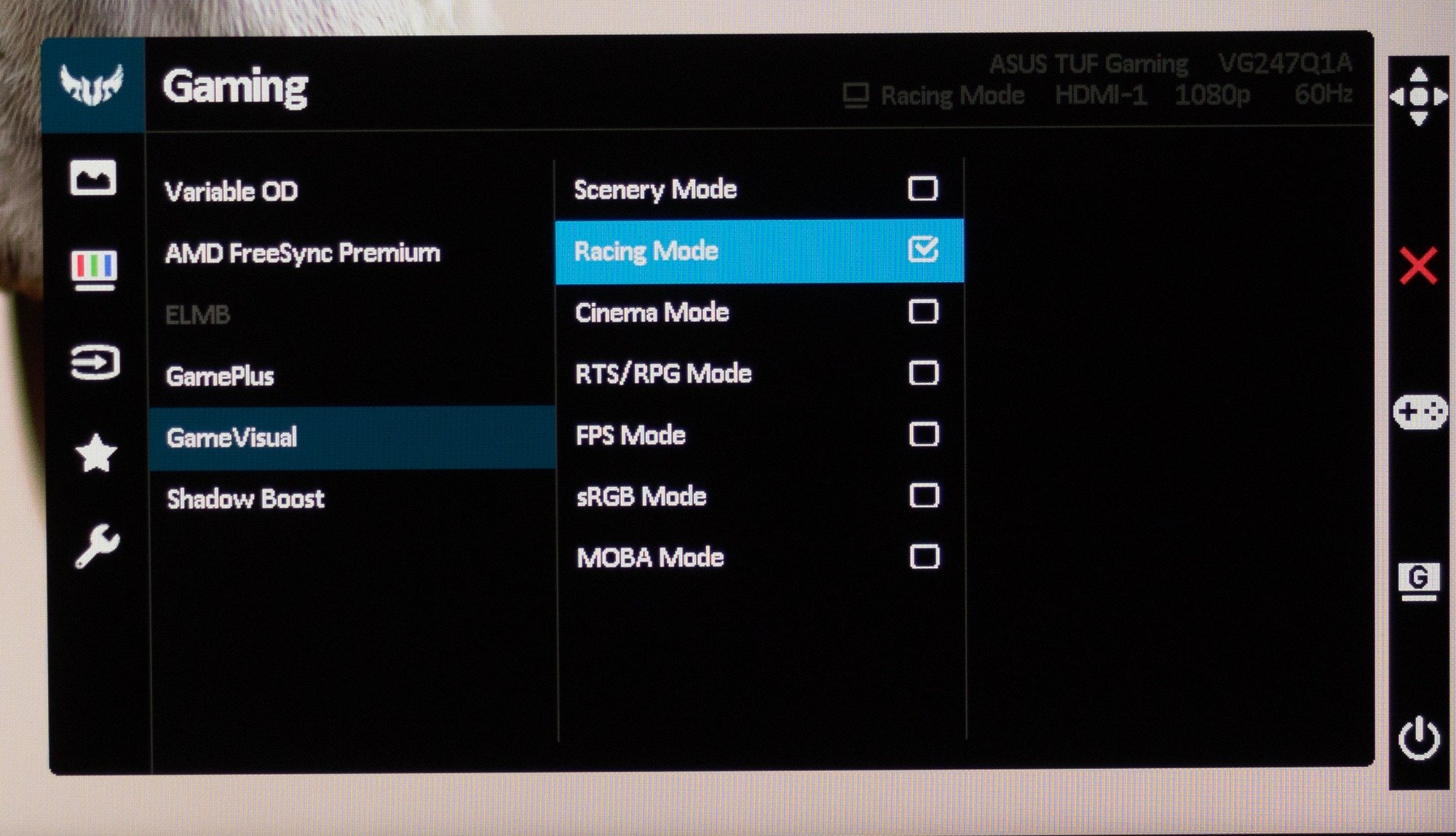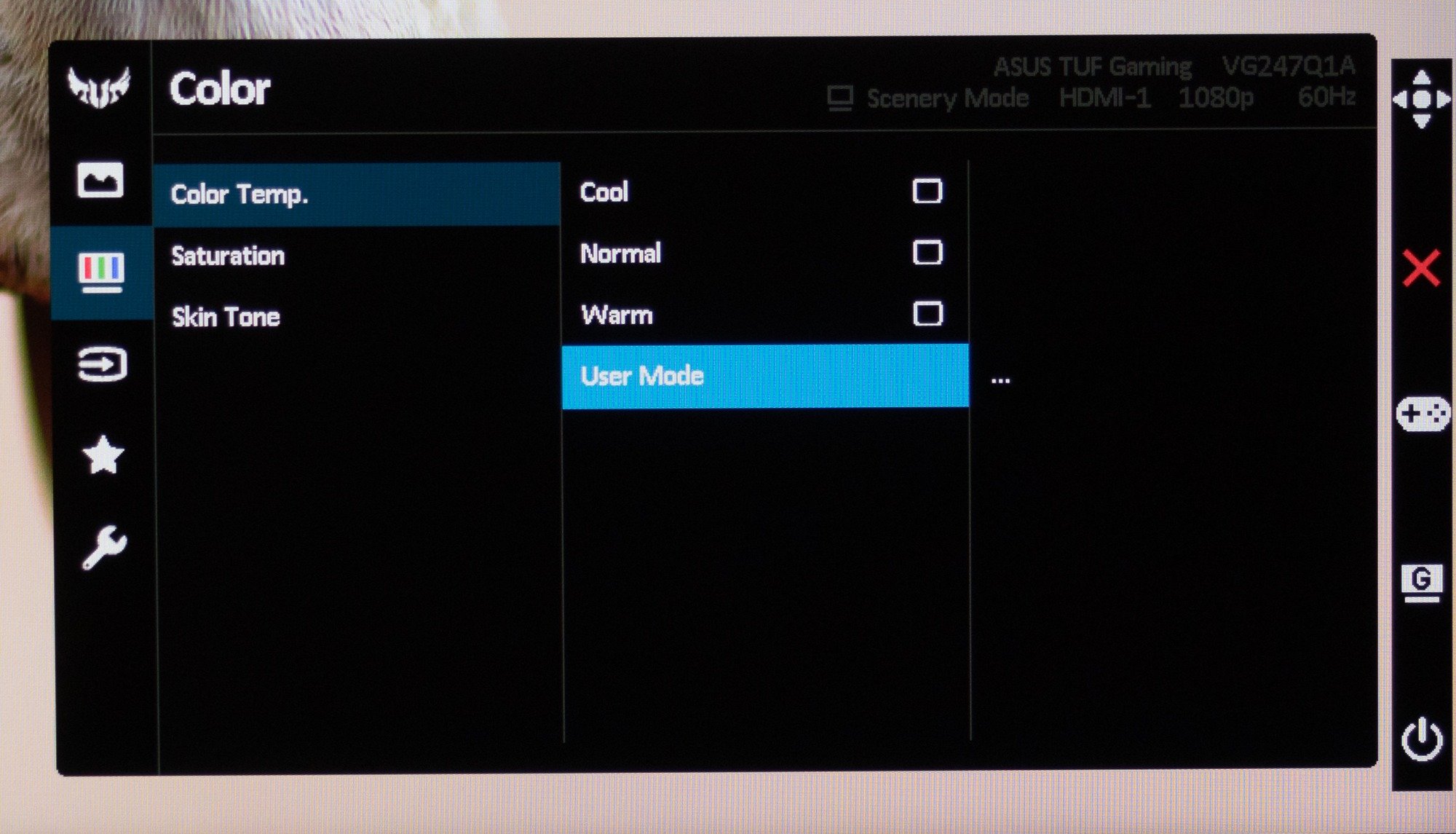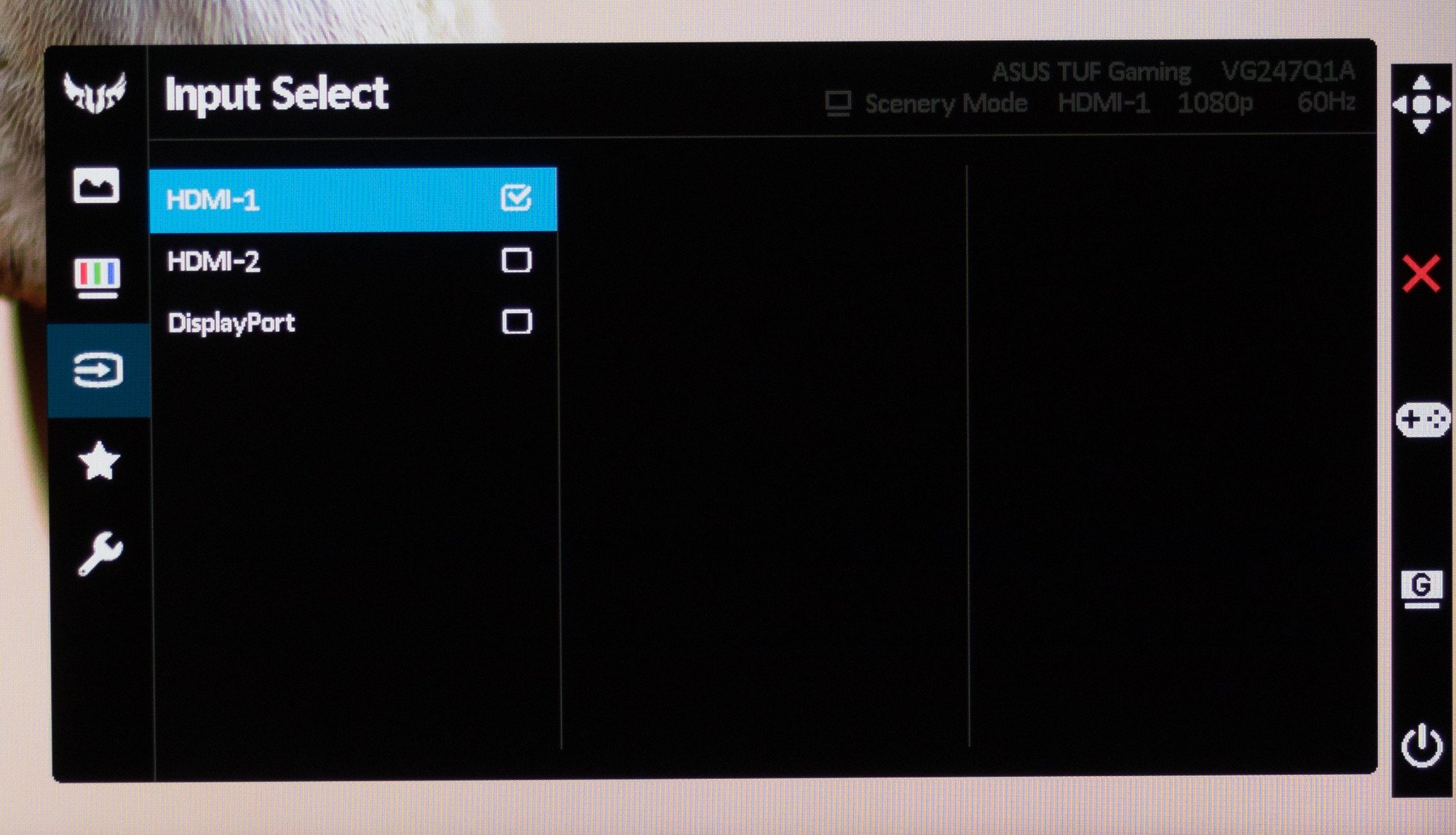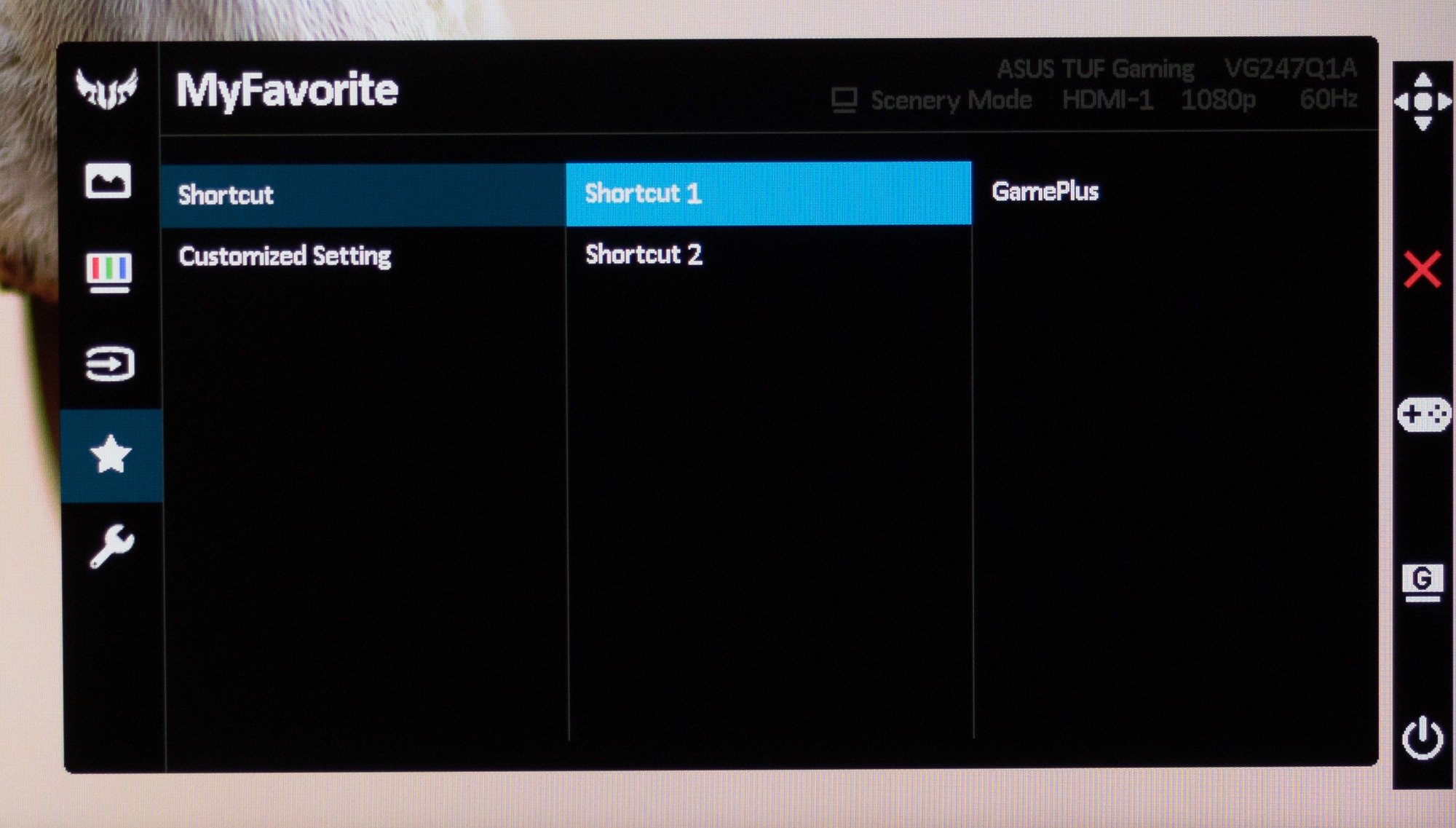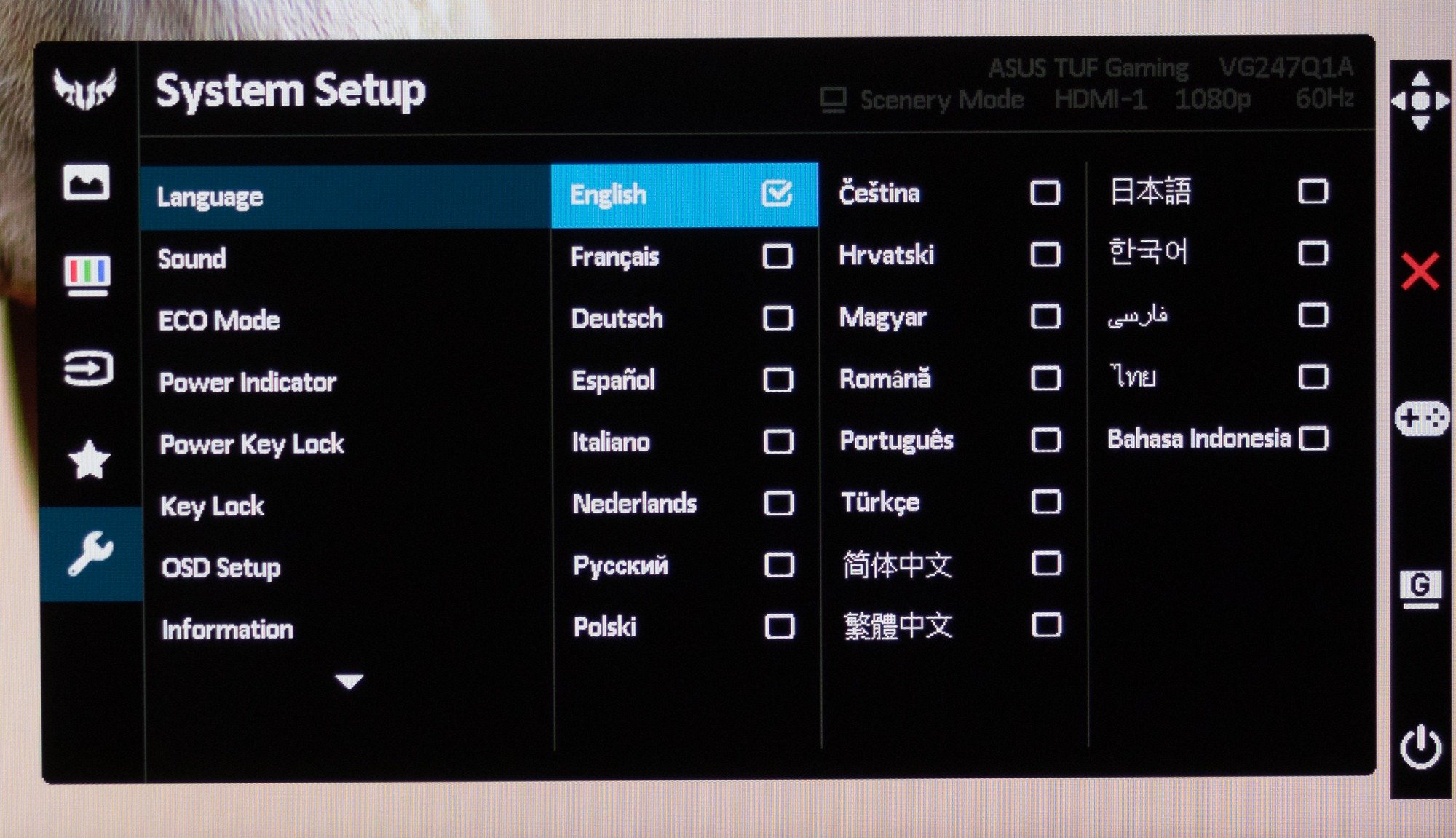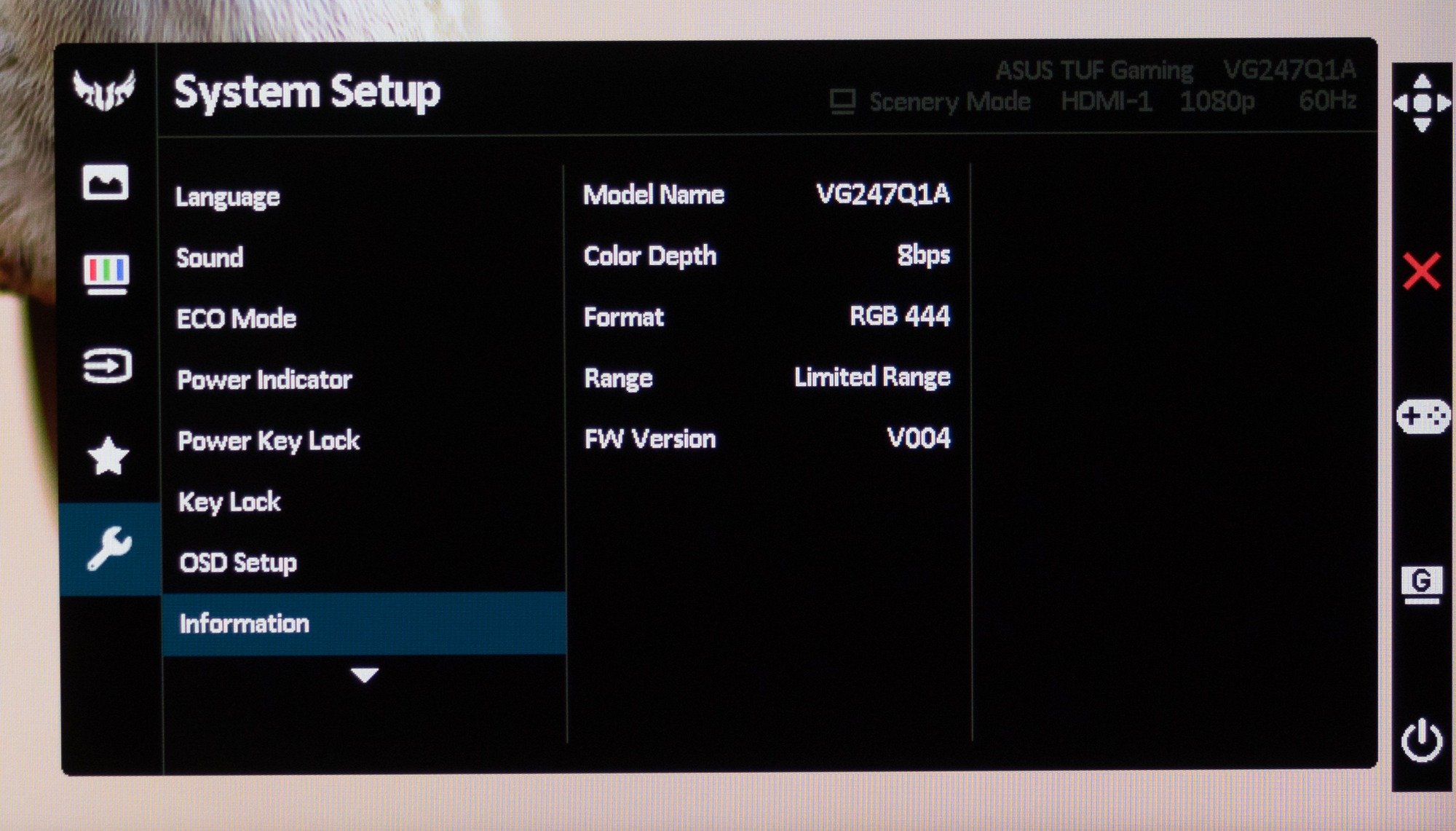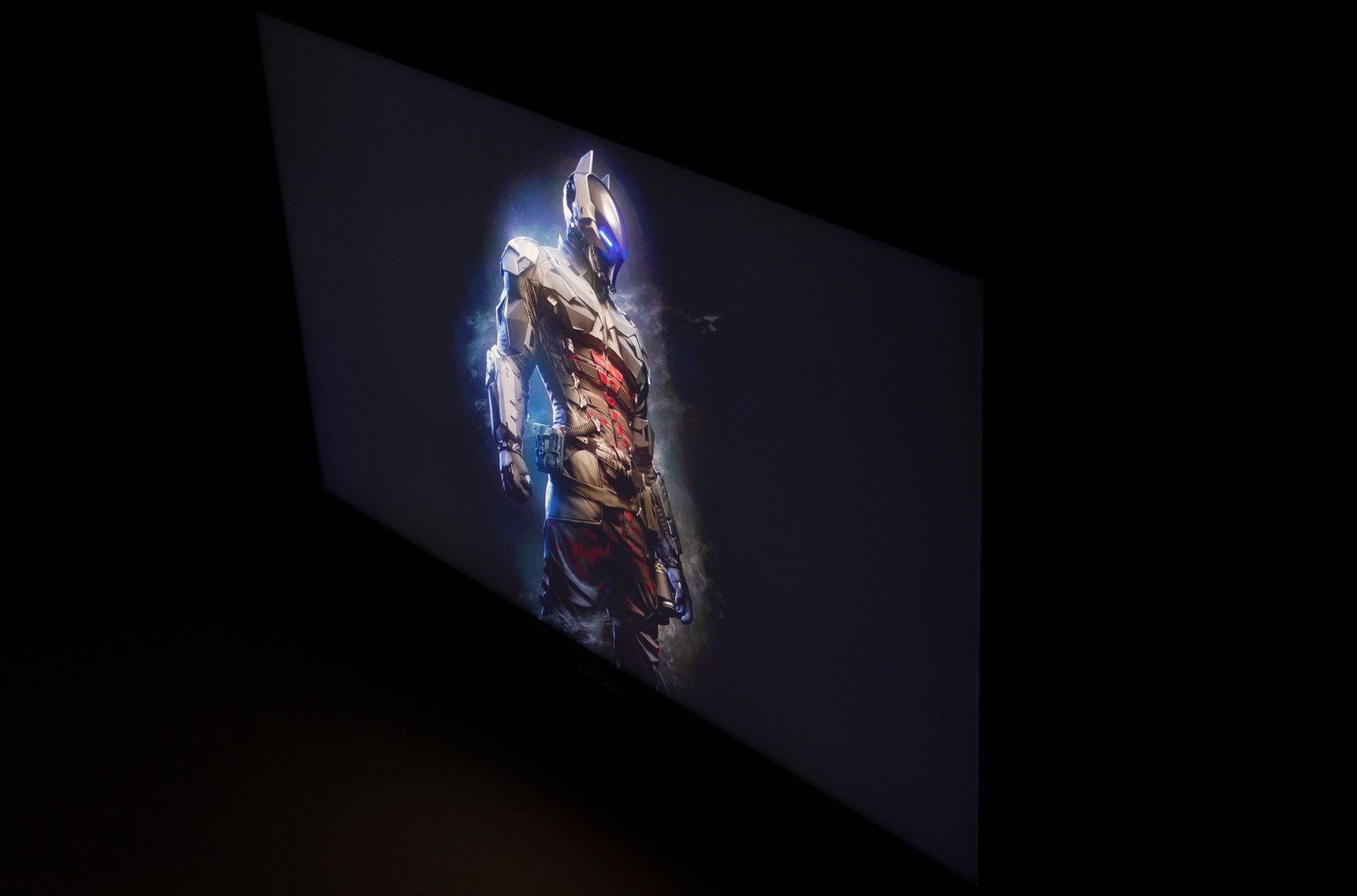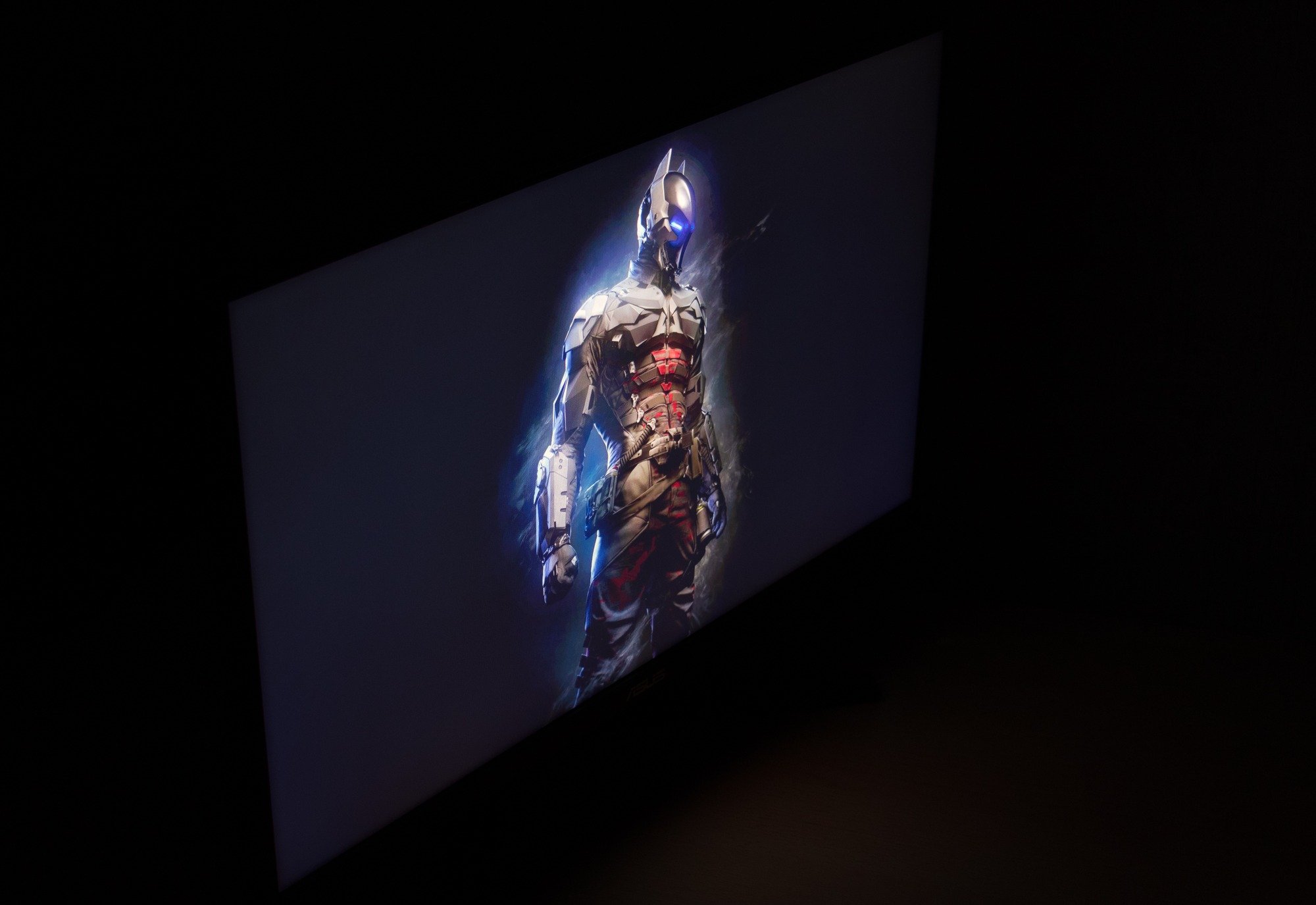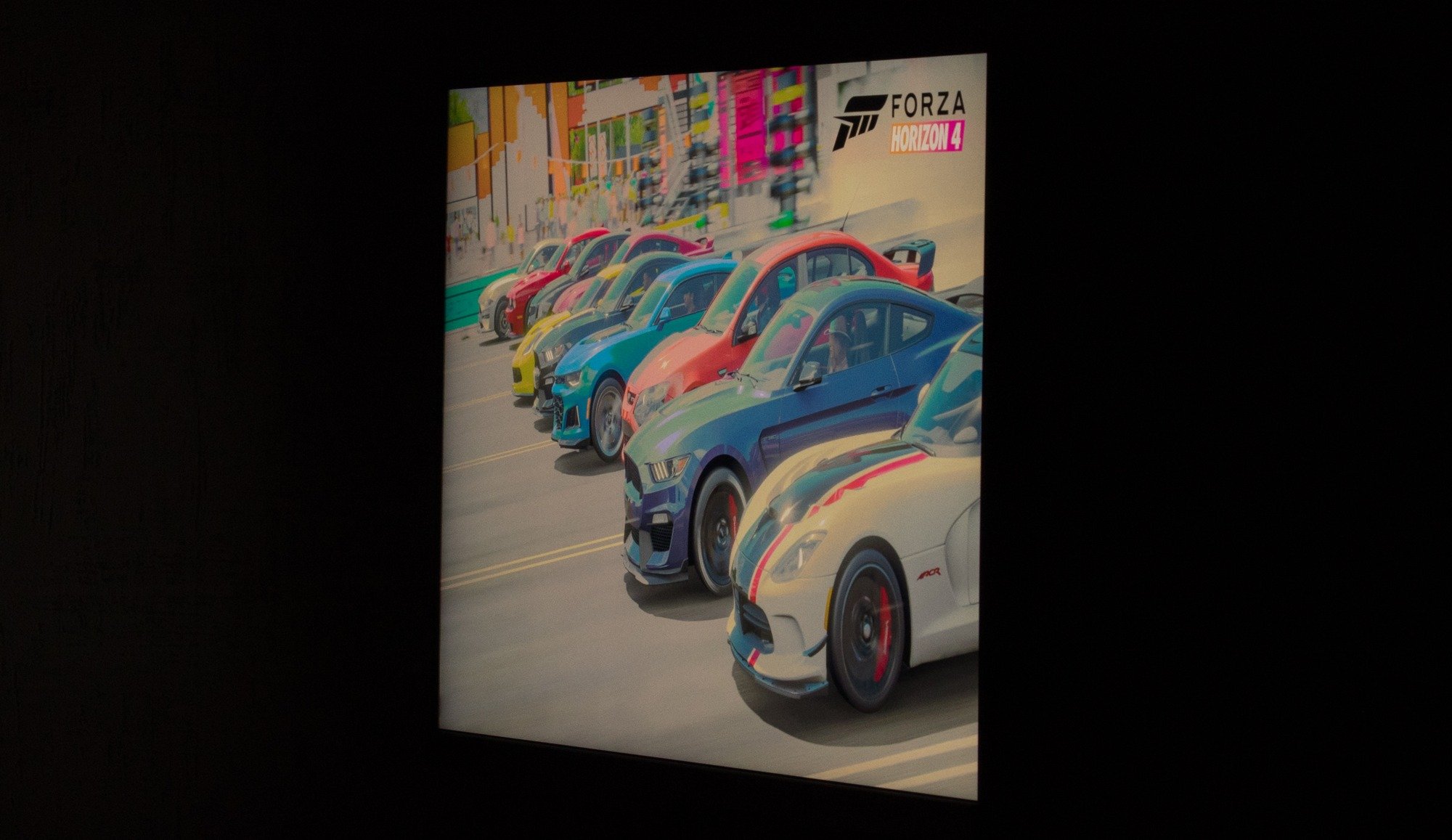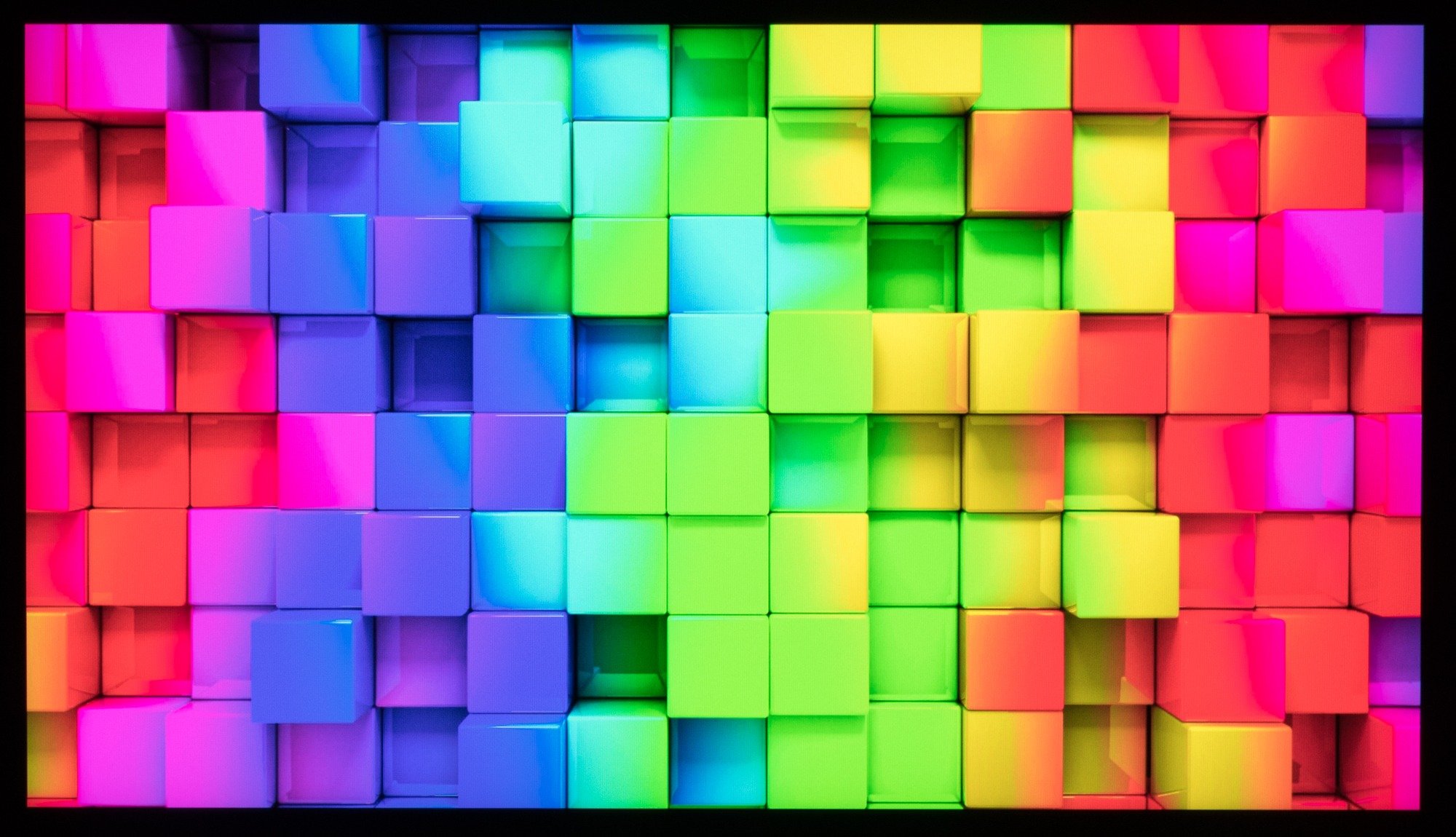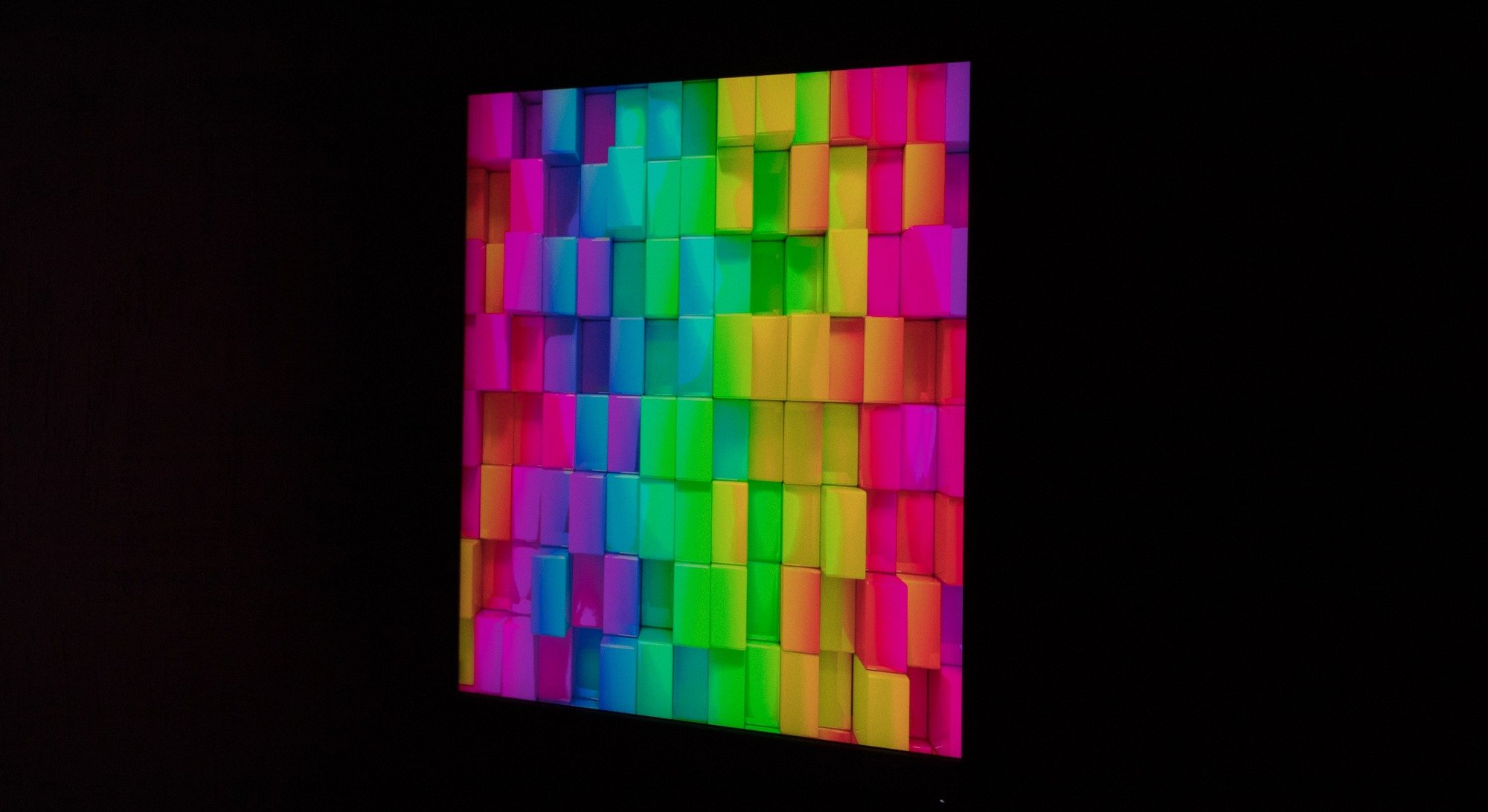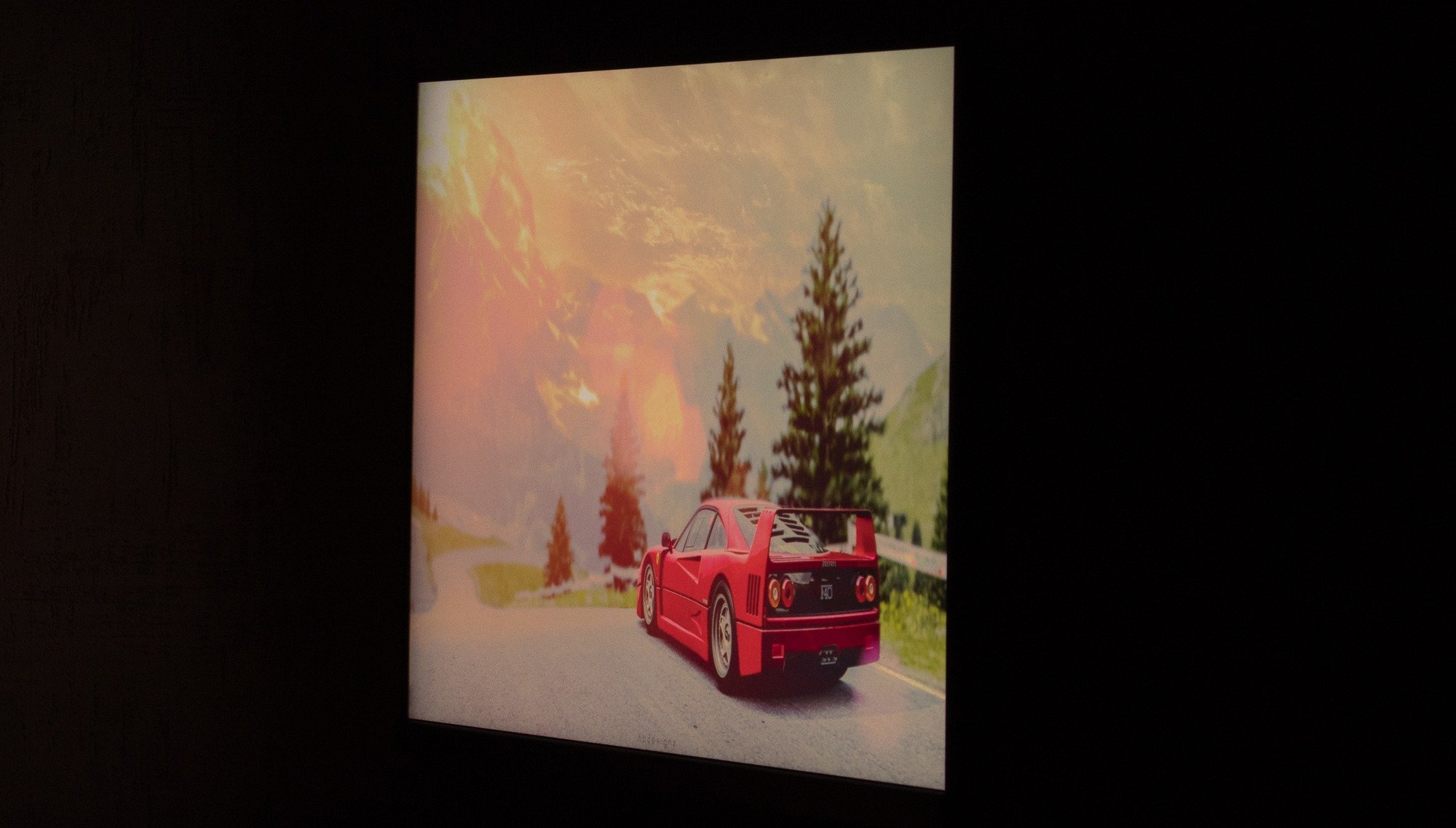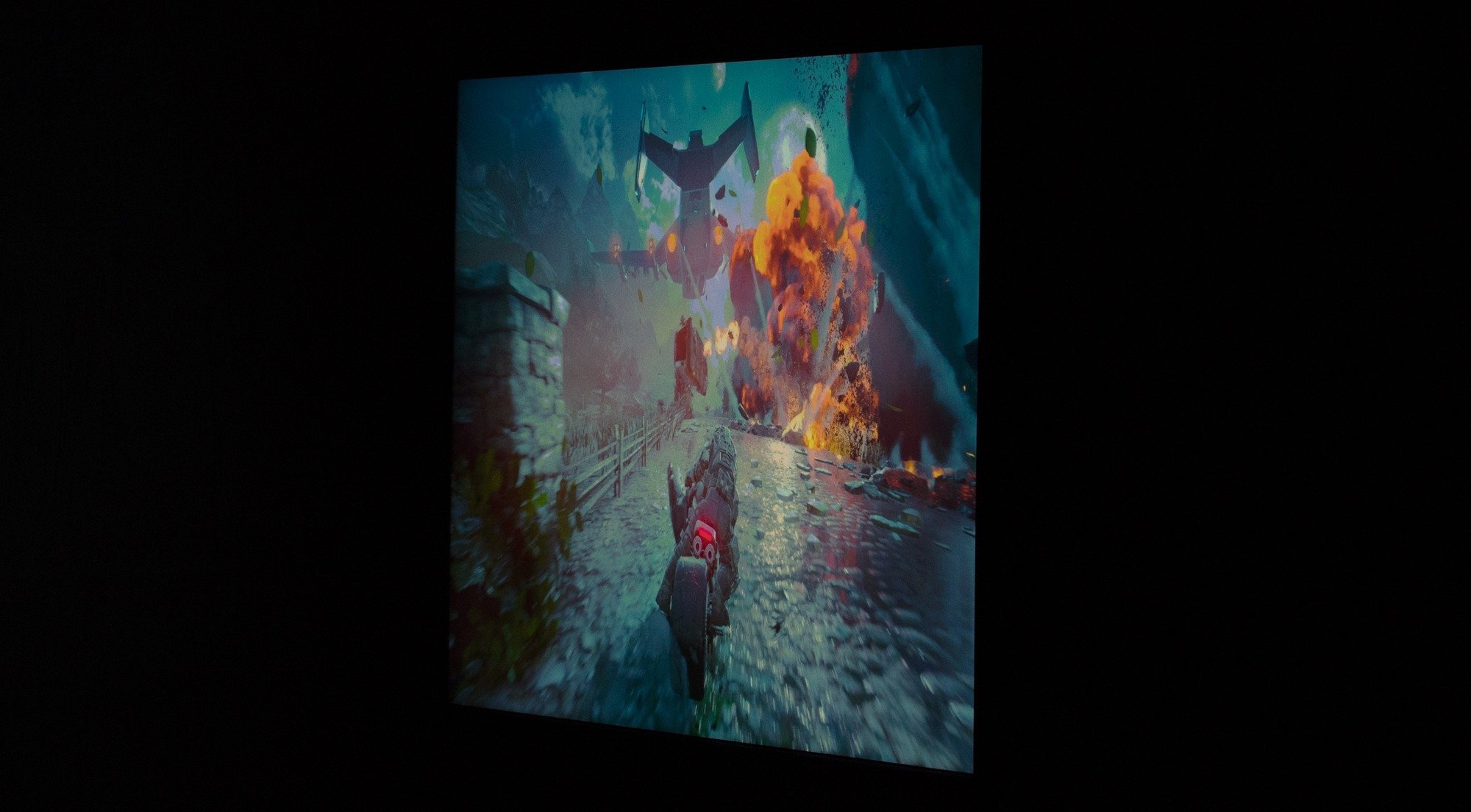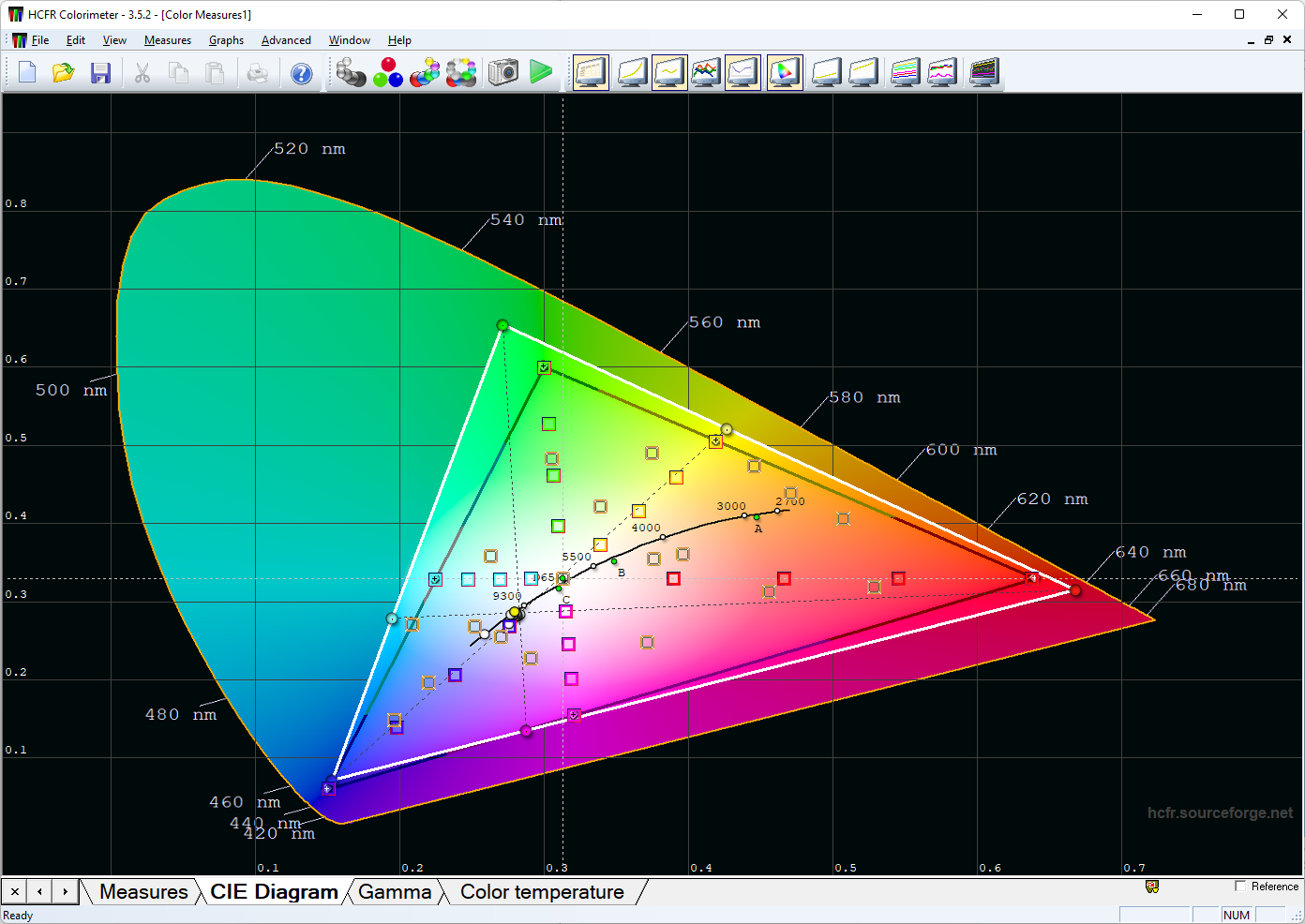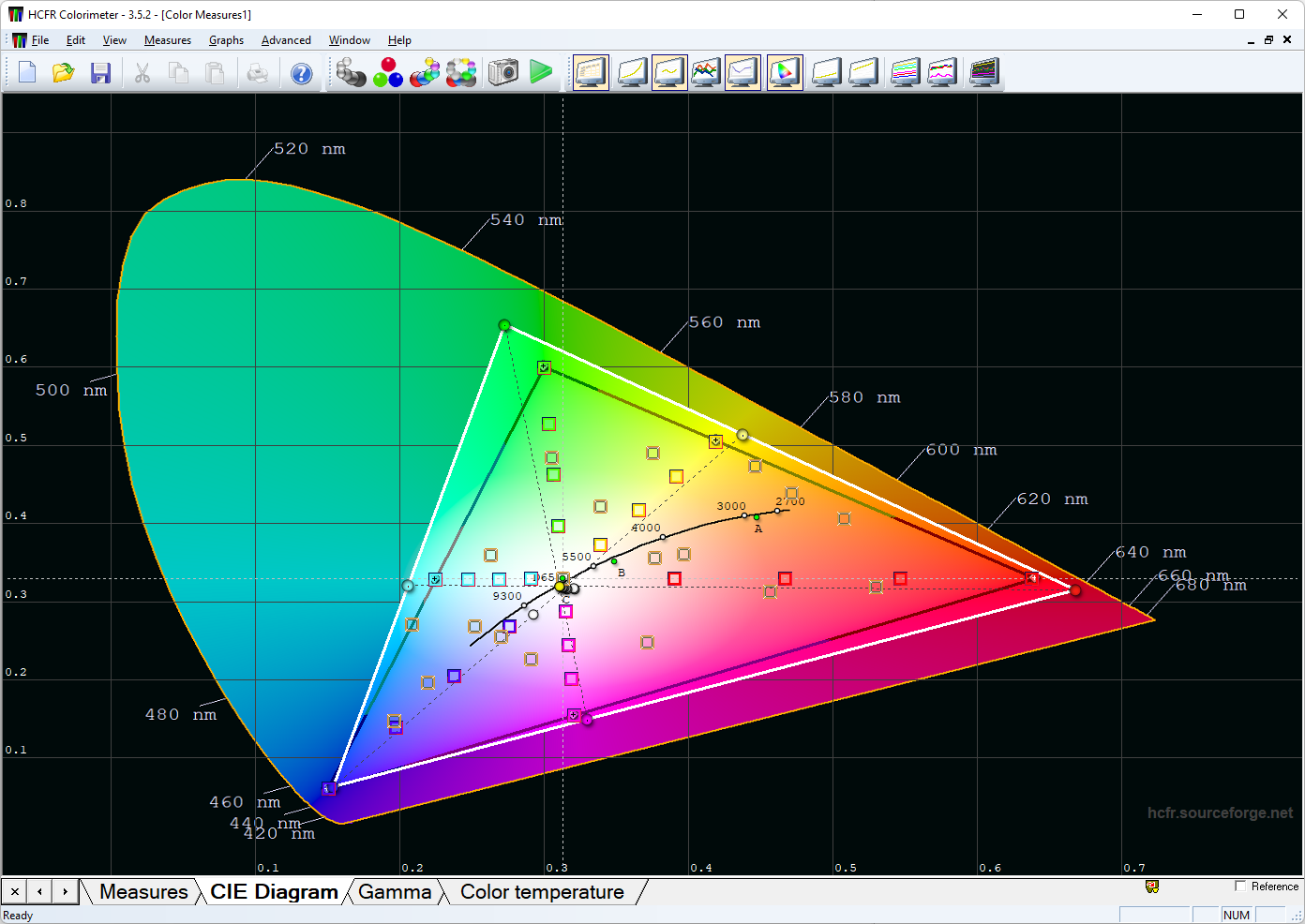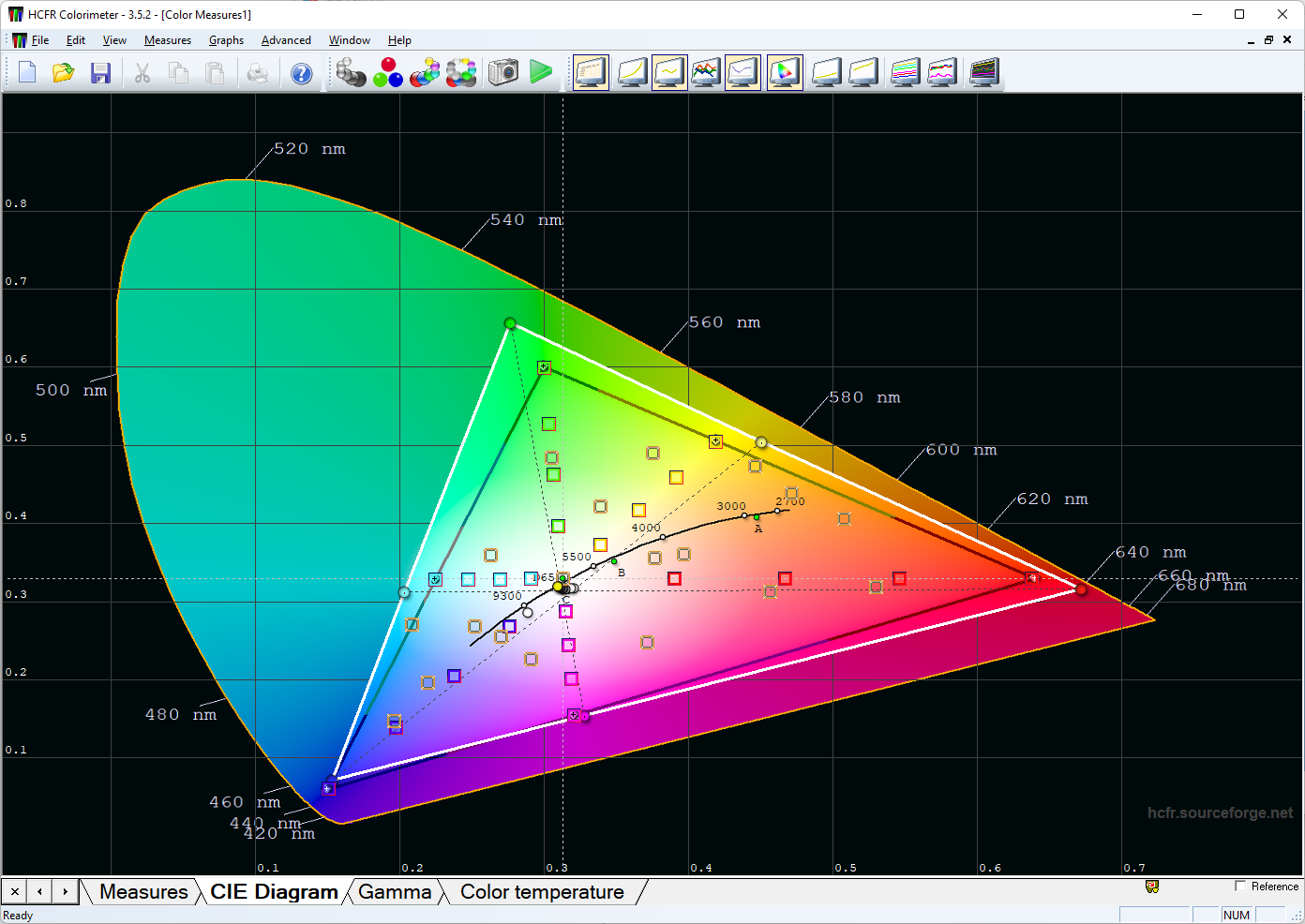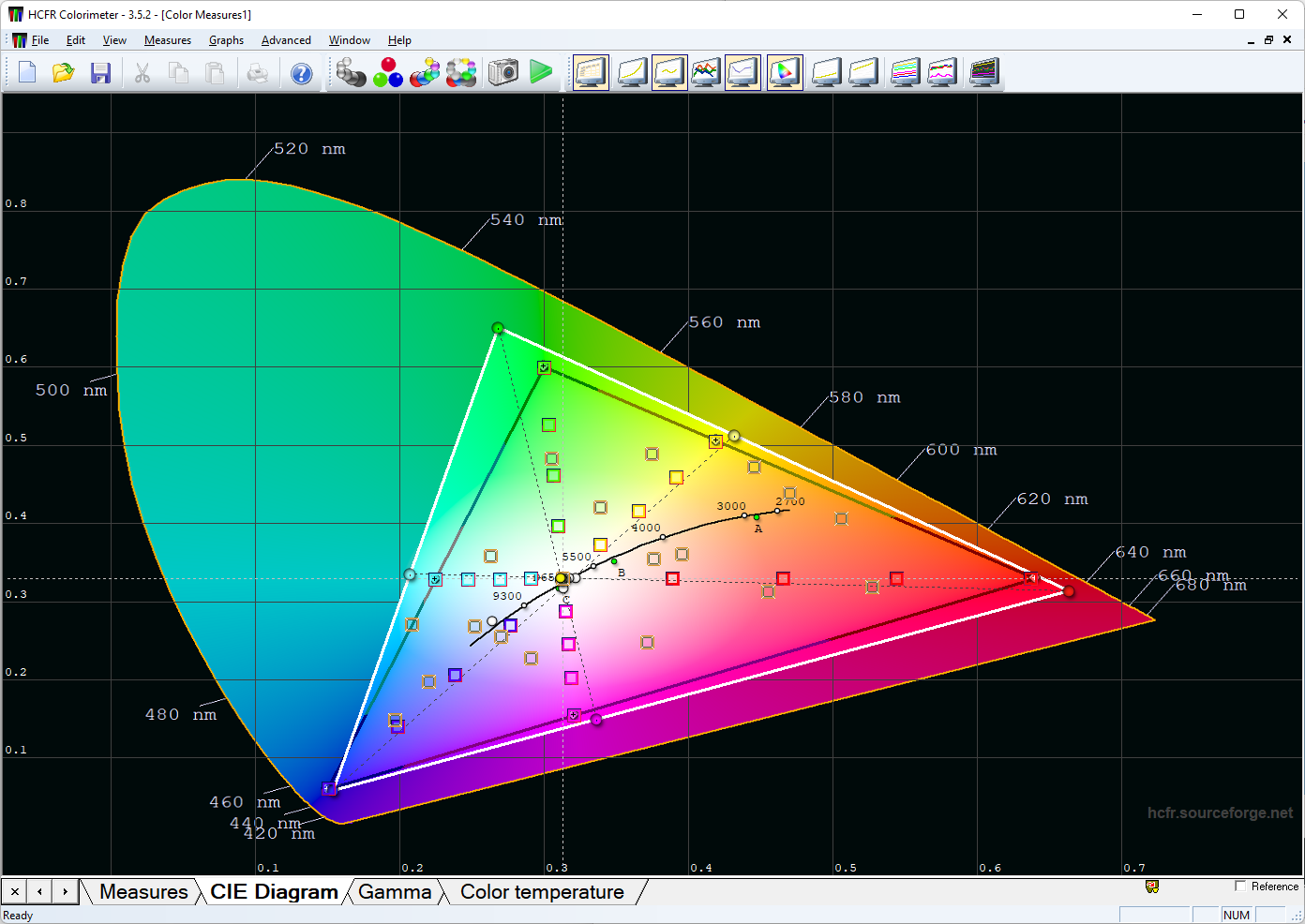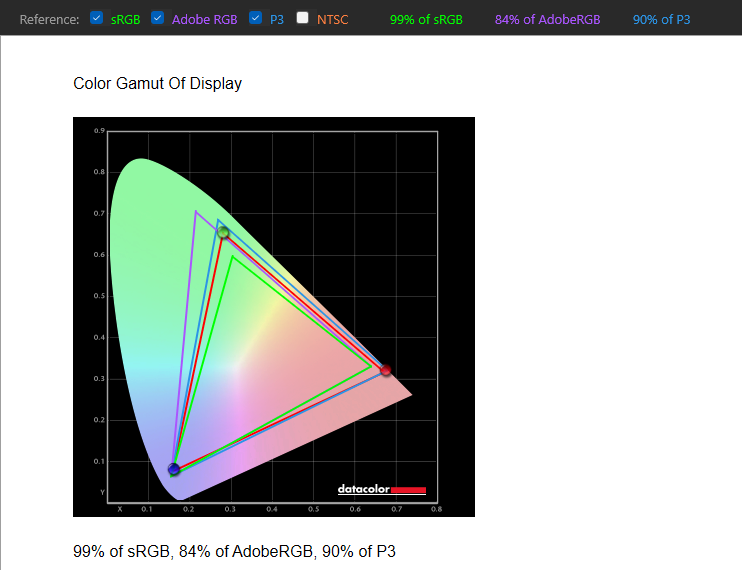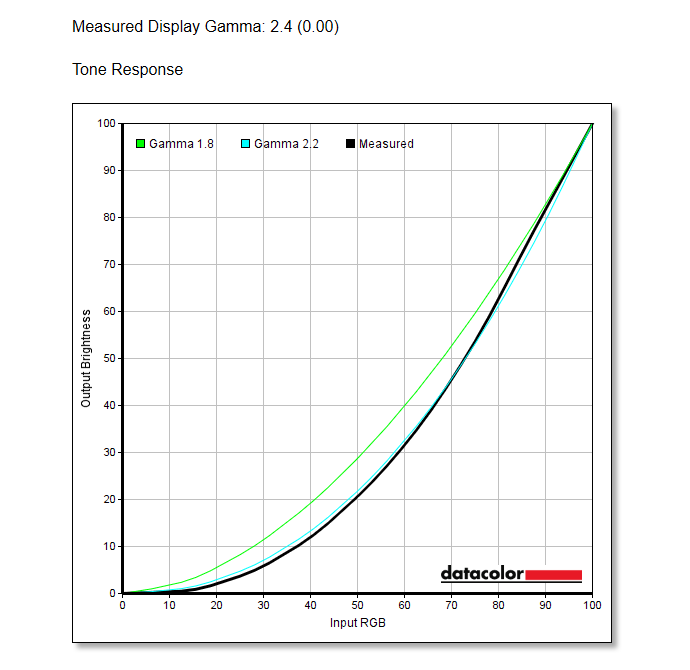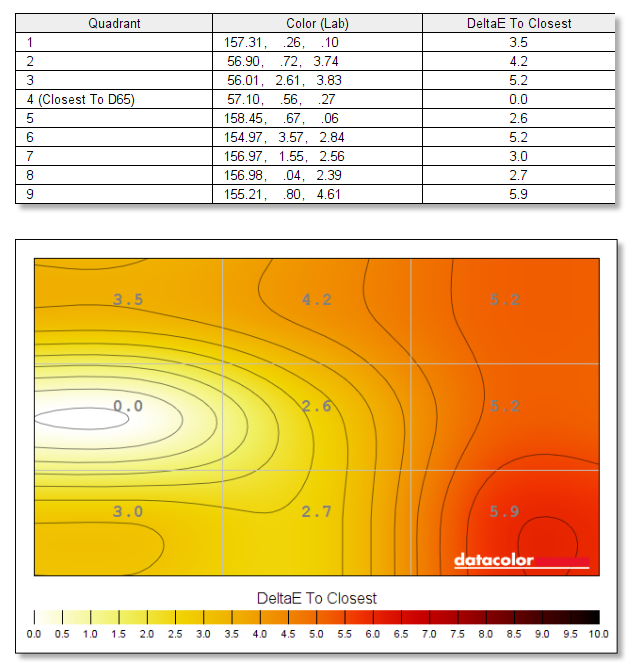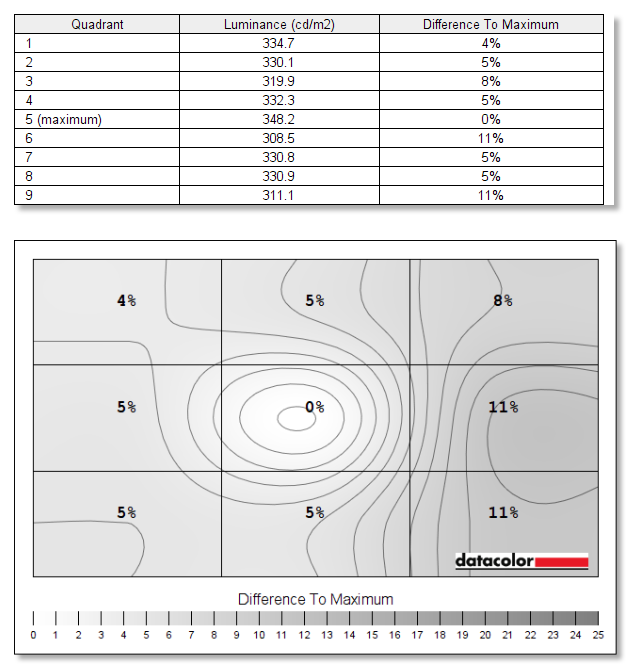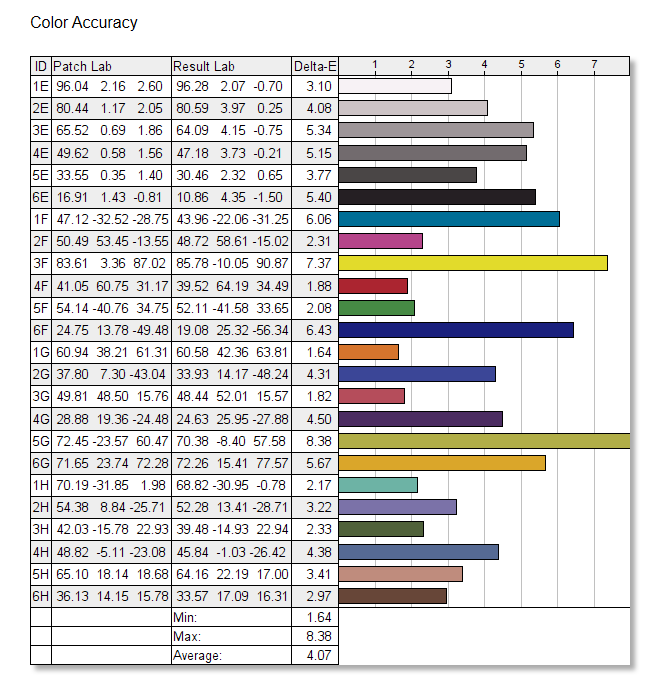Recently, we have become accustomed to the fact that the characteristic "gaming monitor" usually means "large diagonal", "curved screen with non-standard proportions" and, of course, "high price". However, there are now exceptions to this rule - for example, our guest today, ASUS TUF Gaming VG247Q1A, the average price for which in Ukraine is now about 7 thousand UAH.
Specifications
| Diagonal | 23.8” |
| Curvature | absent |
| Aspect ratio | 16:9 |
| Screen type | VA |
| Resolution | 1920х1080 |
| Update frequency | 165 Hz |
| Color scheme | 90% DCI-P3 |
| Colors | 16.7 mln |
| Brightness | 350 cd/m² |
| Contrast | 3000:1 |
| HDR support | no |
| Wall mount | VESA 100x100 |
| Adjustment | tilt |
| Jacks | 1х DisplayPort 1.2, 2х HDMI 1.4, headphone output |
| Additional functionality | FreeSync Premium support |
| Dimensions (together with stand), HxWxD | 394.4x541x174 mm |
| Weight | 3.33 kg |
| Approximate price in Ukraine | 7 thousand UAH |
Design
TUF Gaming can be considered a more affordable gaming series ASUS compared to the Republic of Gamers, and the appearance of ASUS TUF Gaming VG247Q1A is appropriate: it has no "flashy" design elements, metal inserts or RGB backlight. It looks like a regular home monitor, and only TUF Gaming logo on the back and a modest pattern with very moderate gloss hint at it being a gaming monitor.
Around the screen there is a thin "invisible" frame hidden under protective glass. Along with a thin line on the side of the body the image is surrounded by a frame which is 7 mm wide on the sides and top and 19 mm - below. The stand is simple, with a V-shaped "base" and a single adjustment - the tilt of the screen (+ 23 ° ~ -5 °).
All video connectors are located in a small niche under the stand mount - two HDMI 1.4 and one DisplayPort 1.2; in addition to them there is a minijack for headphones.
Menu
ASUS TUF Gaming VG247Q1A is controlled by three hard buttons and a 5-position joystick located in the lower right corner. Two buttons can be used to assign custom functions to the system menu (default is the GamePlus game menu and GameVisual video mode menu),tilting the joystick as well as pressing it brings up a quick menu with access to the main menu and hotkeys.
The first item in the main menu is the game section - here you can adjust the degree of overdrive, activate AMD FreeSync Premium, select video mode in the GameVisual menu and access game settings in GamePlus (for example, enable frame rate display and even schedule changes over time).
The Image menu contains traditional image settings - brightness, contrast, blue filter in the backlight, dynamic contrast, and more. In the next menu, Color, you can change the color temperature, color saturation and skin tone. The Input Select menu allows you to manually switch to another video input, MyFavorite can change hotkey functions, and System Setup contains system settings - OSD language and behavior, built-in speaker volume, eco mode, power backlight, monitor information and current operating mode, factory reset, etc.
Functionality
The ASUS TUF Gaming VG247Q1A uses an 8-bit 23.8-inch VA panel with Full HD resolution. The density of the points is slightly more than 92 PPI, the point size is ~ 0.275 mm. These are quite typical indicators, it is difficult to see individual pixels from the usual distance to the screen, but sharp eyesight will notice a slight lack of "smoothness" in fonts or curved lines.
The maximum refresh rate is 165 Hz (via DisplayPort; if using an HDMI connection, the maximum available frequency is 144 Hz). Also, which is not uncommon in budget models, ASUS TUF Gaming VG247Q1A supports AMD FreeSync Premium adaptive frequency technology and works with NVIDIA G-Sync - although the manufacturer has not officially announced this, and the NVIDIA control panel states that the monitor does not have an official compatibility with its technology, but it worked without any problems in G-Sync games.
The brightness in this monitor is adjusted by changing the current, PWM is not used over the entire brightness range, so the screen does not flicker in normal mode.
As with some other gaming models, the ASUS TUF Gaming VG247Q1A has the ability to increase clarity in dynamic scenes by turning off the backlight "through the frame" (ELMB item in the gaming settings, has two levels of intensity - "standard" and "turbo"). This greatly reduces the maximum brightness and causes the screen to flicker, but completely eliminates the blurring of the image in the speakers and the plumes on fast-moving objects. Note that ELMB is incompatible with AMD FreeSync Premium, so the user will have to choose which feature is more important to them.
ASUS TUF Gaming VG247Q1A image quality
The screen is "semi-matte", with almost invisible parasitic reflections on a dark background, if you look at it from a typical user's position. When deflected to the side, the screen gradually becomes more "glossy", but it does not interfere with work on it. The so-called crystal effect is present, but moderate - it is best seen in the macro image of the screen (at the same time you can see the typical structure of pixels for VA-technology).
The manufacturer specifies a panel response time of 1 ms (MPRT), but this is only achieved by using the ELMB mode. VA panels have always been more inertial than IPS, and the real response time of the ASUS TUF Gaming VG247Q1A without sharpening by "frame-by-frame" backlight is as high as for a gaming monitor at 10ms (with maximum overdrive and refresh rate). 165 Hz). By the way, the panel overclocking settings (Variable OD in the game menu) have five levels of intensity and the ability to turn off completely. It should be noted that almost all overdrive modes have little effect on the blurring of fast-moving objects. The difference is felt only at the maximum value of acceleration, and there are almost no overdrive artifacts on it, so it can be used for games.
Overdrive off / medium / maximum (165 Hz):
The uniformity of black is very good, in a dark room with maximum screen brightness only in the lower left corner you can see a slightly lighter area, the rest of the screen remains evenly dark.
The glow effect for the VA panel is expected to be moderate: when viewed from the side and top of the screen, the black background has a fairly light glow of neutral temperature, regardless of the angle of view.
In terms of viewing angles, they are also typical of VA technology: when viewed from the side, the screen noticeably "warms up" and loses saturation, mainly due to the illumination of dark areas of the image. However, in general, the decrease in brightness from a large angle of view is quite moderate for this type of screen, although, of course, significantly stronger than in IPS.
Color coverage in ASUS TUF Gaming VG247Q1A is quite wide and is 90% DCI-P3, 85% Adobe RGB and 99% sRGB. In different GameVisual video modes, it is slightly different, but very small - the difference is usually up to 1%.
Color coverage, from left to right - Cinema, Racing, Scenery, sRGB modes:
The lowest brightness is 100 cd/m², which is quite a lot, but it is quite expected from a monitor that does not use PWM to adjust the brightness. With such brightness, playing or working in complete darkness will not be very comfortabl. It is better to have some backlight in the room, even very dim.
By default, the monitor settings are set to Racing mode, which shows a fairly rich and bright image. The gamma value here is increased - 2.4, which leads to deep shadows with the possibility of losing information in dark areas. The maximum brightness almost exactly corresponds to the value declared in the official characteristics - 348 cd/m², the maximum contrast is slightly lower - 2750: 1 (against 3000: 1 "in the passport"), but still it is a very high figure, 2-3 times higher for the typical contrast value in IPS monitors.
The color temperature can have three values - "cold" (9200K), "normal" (7400K) and "warm" (6600K). Also in the settings there is a custom mode with manual adjustments for the three main colors - the default temperature in it is the same as in the "warm", which is very close to the standard, 6500K. The uniformity of color temperature is average - the maximum deviation in different areas of the screen is almost 6%; however, as for the game monitor, this is not critical at all. The uniformity of the white field is very good: the brightest zone is the center, the "darkest" - the right part of the screen; the difference between them is 8-11%, while the difference with other zones does not exceed 5%.
Other GameVisual video modes (Scenery, Cinema, RTS / RPG, sRGB, MOBA) feature basic settings for brightness, contrast, color saturation, gamma, and more. Racing among them is probably the calmest, so it can really be considered suitable for most situations - others are noticeably brighter, with some differences (for example, in FPS shadows lighten to better see what is happening in the game in the dark). The exception here is the sRGB mode, it is even "dimmer" than Racing, but it blocks all manual settings, including brightness, so you cannot adjust the image to your liking in this mode.
Unfortunately, the accuracy of color reproduction is not a strength of ASUS TUF Gaming VG247Q1A - in the "default" Racing mode, the average value of ΔE is 4, and the maximum in some colors reaches 8 (remember, it is desirable that this parameter was not higher than 3). The best option here is the sRGB mode. In most colors the value of ΔE does not exceed two, but some colors in this mode deviate significantly from the norm. However, for a monitor that is not designed for serious graphics work, this is not a big drawback.


